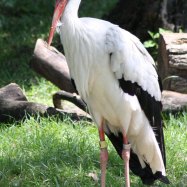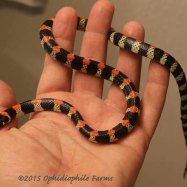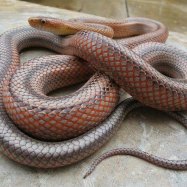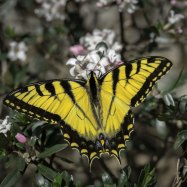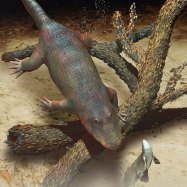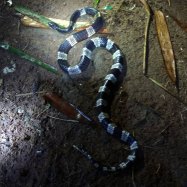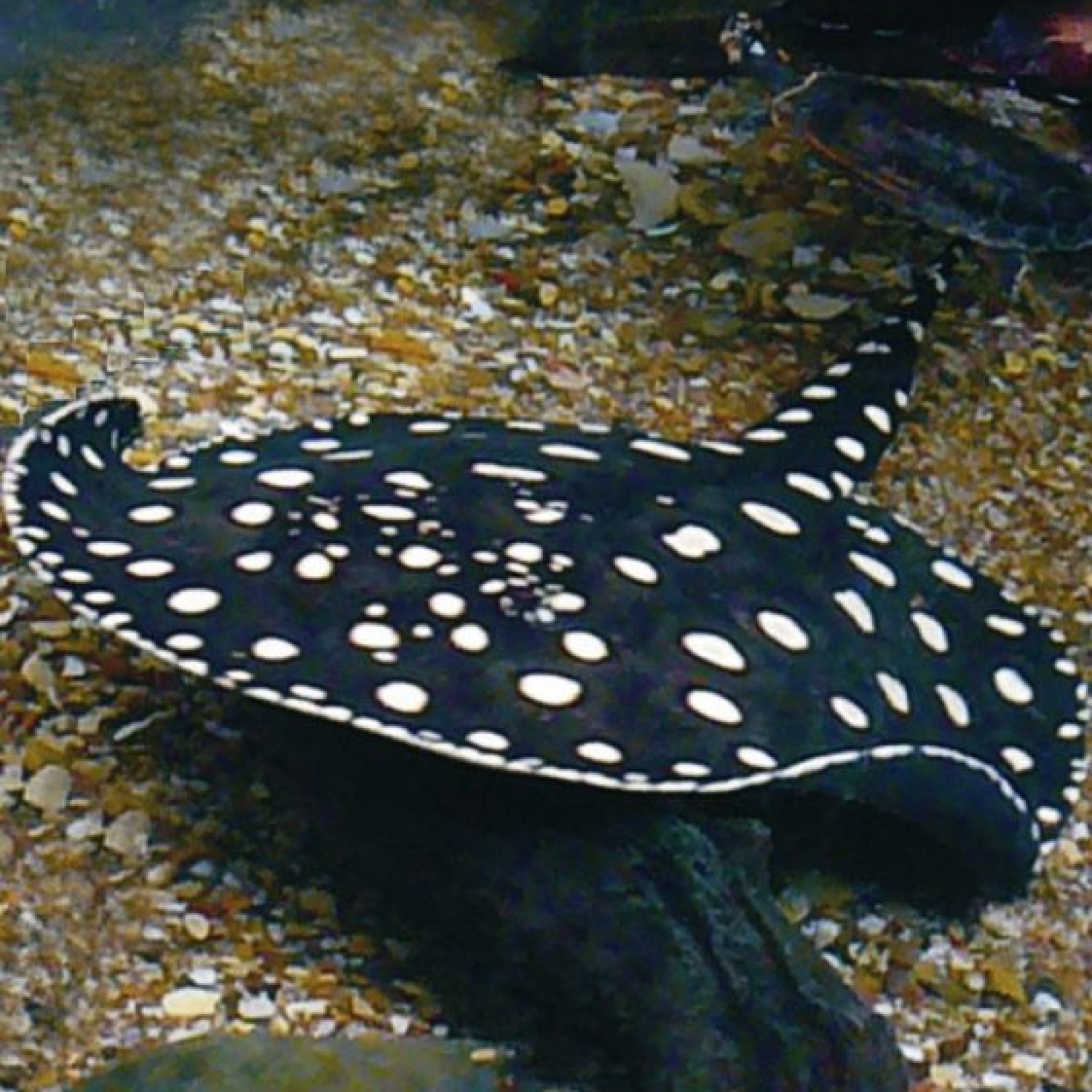
Polka Dot Stingray
Up to 75 cm
Did you know there is a unique species of stingray called the Polka Dot Stingray? This colorful creature can grow up to 75 cm long and can be found in the Amazon Basin. It belongs to the family Potamotrygonidae and has a distinctive flat and round body shape. If you ever encounter one, be sure to admire its beautiful polka dot pattern! #PolkaDotStingray #AmazonBasin #Potamotrygonidae.
Animal Details Summary:
Common Name: Polka Dot Stingray
Kingdom: Animalia
Habitat: Freshwater rivers and streams
Discovering the Beautiful Polka Dot Stingray: A Fascinating Freshwater Species from the Amazon Basin
Have you ever heard of a stingray with polka dots? If not, let us introduce you to one of the most unique and mesmerizing creatures from the Amazon Basin – the Polka Dot Stingray, also known as Potamotrygon leopoldi.Native to the freshwater rivers and streams of South America, particularly Brazil, this exquisite species has captured the hearts of marine biologists and animal lovers alike. Its charming polka dot pattern, coupled with its fascinating features, makes it a truly remarkable creature that deserves our attention.
In this article, we will dive deeper into the world of the Polka Dot Stingray, exploring its scientific name, classification, habitat, behaviors, and more Polka Dot Stingray. So sit back, relax, and let us take you on a journey to discover this beautiful and intriguing creature.
The Science Behind the Polka Dot Stingray
Scientifically known as Potamotrygon leopoldi, the Polka Dot Stingray belongs to the kingdom Animalia, indicating that it is a multicellular, eukaryotic organism. The name "leopoldi" is a reference to the renowned Belgian monarch, King Leopold II, who had a fascination for the natural world.The Polka Dot Stingray belongs to the phylum Chordata, which includes all animals with a spinal cord. They are classified under the class Chondrichthyes, also known as cartilaginous fish, as their skeletons are made completely of cartilage instead of bone.
This species is a member of the order Myliobatiformes, which includes other ray species such as mantas and eagle rays. They are the smallest family among all stingrays, Potamotrygonidae, and are closely related to the bottom-dwelling fresh and brackish water stingrays of the genus Potamotrygon.
Exploring the Habitat of the Polka Dot Stingray
As the name suggests, the Polka Dot Stingray is found in the freshwater habitats of the Amazon Basin in Brazil. They are specialized creatures and have adapted to living in fast-flowing rivers and streams, making them different from other stingrays that inhabit more saline waters Pied Billed Grebe.These stingrays are bottom-dwellers and are often found in sandy or muddy substrate, camouflaging with their surroundings. They prefer to live in areas with dense vegetation, as it provides them with shelter and a constant food source.
One of the most interesting aspects of this species is their migration patterns. They are known to migrate between the main channel of the Amazon River and its tributaries during different times of the year, depending on the water level and food availability.
The Feeding Strategy of the Polka Dot Stingray
Being carnivorous, the Polka Dot Stingrays primarily feed on insects, small crustaceans, and fish. They are ambush predators, lying in wait for their prey and using their senses to detect any movement in the water.Their flattened and round body shape allows them to remain hidden in the substrate, with only their eyes and mouth exposed. Once they spot their prey, they use their powerful jaws to crush and consume it.
Interestingly, the Polka Dot Stingrays have sensory organs called Ampullae of Lorenzini, which help them detect the electrical fields produced by their prey. This unique ability allows them to locate their food even in muddy or murky waters.
The Polka Dot Stingray's Appearance
The most remarkable feature of the Polka Dot Stingray is its striking coloration. The top of their body is a dark brown to black, while the underside is a creamy white. The main attraction, however, is the numerous white polka dots spread all over their body, which gives them their unique and beautiful appearance.These dots are not just for aesthetic purposes; they act as a defense mechanism for the stingray. As they lie on the bottom of the riverbed, the dots help them blend in with their environment, making it difficult for predators to spot them.
Their body shape is another distinguishing factor for the Polka Dot Stingray. Unlike other stingrays, they have a much flatter and rounder body, allowing them to maneuver easily in fast-flowing waters. They also have a long, whip-like tail with a venomous spine at the base, which they use for defense against predators.
Size and Distribution of the Polka Dot Stingray
The Polka Dot Stingrays are a relatively small species, with a maximum length of 75 cm. Female stingrays are known to be larger than males, growing up to 60 cm, while males reach a maximum size of 50 cm.They are found predominantly in the Brazilian waters of the Amazon Basin, particularly in the rivers of the state of Pará. However, due to their migratory nature, they have also been spotted in other countries within the Amazon region, such as Colombia and Peru.
Considering their narrow distribution, the conservation status of the Polka Dot Stingray is currently listed as "Data Deficient" on the IUCN Red List. This means that there is not enough information available about their population and threats to assess their conservation status accurately.
The Threats Faced by the Polka Dot Stingray
Like many other freshwater species, the Polka Dot Stingray is facing numerous threats to its survival. One of the primary concerns is the destruction and alteration of their natural habitats due to human development, such as damming and deforestation.They are also threatened by overfishing, as they are are often caught unintentionally in fishing nets. Despite being venomous, these stingrays are not aggressive towards humans and are not considered a threat to people.
However, due to their charming appearance, there is a growing demand for them in the exotic pet trade, which puts pressure on their wild populations. These factors, along with the lack of knowledge regarding their population status and biology, make it difficult to implement conservation measures to protect them.
The Importance of Understanding and Protecting the Polka Dot Stingray
The Polka Dot Stingray may seem like just another unique species from the Amazon, but they play a crucial role in their ecosystem. As bottom-dwellers, they help maintain the health of the riverbed by scavenging and consuming dead organisms, keeping the waters clean.Their presence also indicates the health and balance of the freshwater ecosystem they inhabit. Any impact or disturbance to their populations can have a ripple effect on the entire ecosystem, leading to potential consequences for other species and even human activities that rely on these freshwater resources.
It is essential for us to understand and appreciate the value of the Polka Dot Stingray and other freshwater animals to protect them and maintain the ecological balance of the Amazon Basin.
Final Thoughts
The Polka Dot Stingray is truly a hidden gem in the depths of the Amazon. Its vibrant coloration, unique features, and important role within its ecosystem make it a fascinating creature to learn about.As we continue to explore and discover the wonders of our natural world, it is essential to remember the importance of conservation and protecting these amazing species for future generations to appreciate and admire. And maybe one day, you might even have the opportunity to spot a polka dot stingray in the wild and marvel at its beauty.

Polka Dot Stingray
Animal Details Polka Dot Stingray - Scientific Name: Potamotrygon leopoldi
- Category: Animals P
- Scientific Name: Potamotrygon leopoldi
- Common Name: Polka Dot Stingray
- Kingdom: Animalia
- Phylum: Chordata
- Class: Chondrichthyes
- Order: Myliobatiformes
- Family: Potamotrygonidae
- Habitat: Freshwater rivers and streams
- Feeding Method: Carnivorous
- Geographical Distribution: South America
- Country of Origin: Brazil
- Location: Amazon Basin
- Animal Coloration: Dark brown to black with white polka dots
- Body Shape: Flat and round
- Length: Up to 75 cm
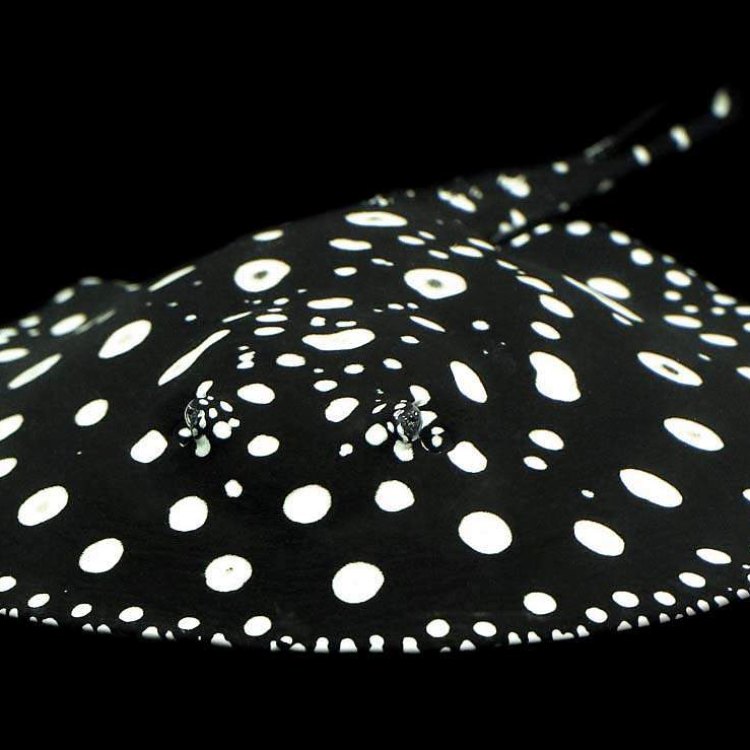
Polka Dot Stingray
- Adult Size: Average size is around 60 cm
- Average Lifespan: Unknown
- Reproduction: Reproduce through internal fertilization
- Reproductive Behavior: Unknown
- Sound or Call: Noises produced are not well documented
- Migration Pattern: Unknown
- Social Groups: Solitary
- Behavior: Nocturnal
- Threats: Habitat loss, overfishing, and pollution
- Conservation Status: Critically Endangered
- Impact on Ecosystem: As a top predator, it helps regulate the population of its prey species
- Human Use: Collected for the aquarium trade
- Distinctive Features: Distinctive polka dot pattern on its body
- Interesting Facts: The Polka Dot Stingray is one of the most unique and visually striking stingray species.
- Predator: Unknown
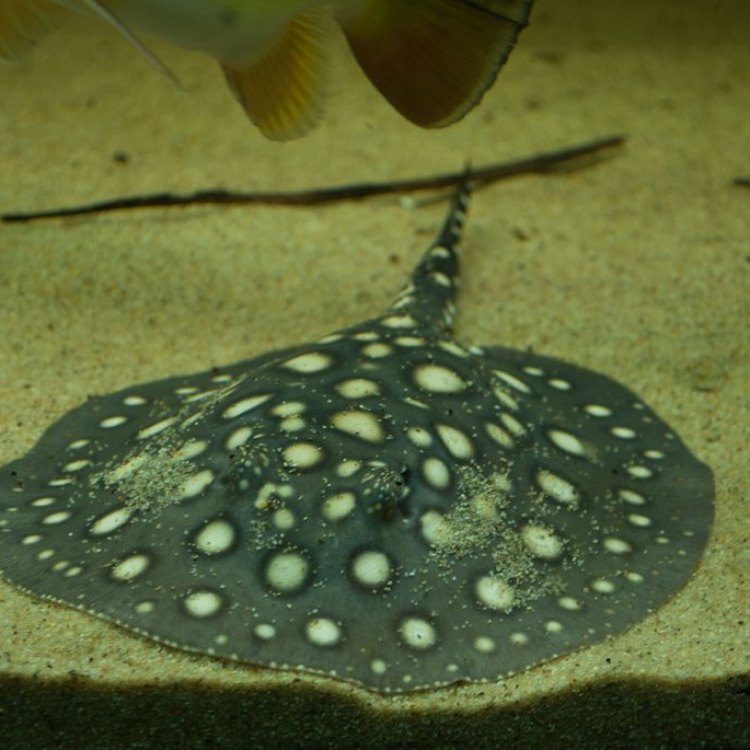
Potamotrygon leopoldi
The Polka Dot Stingray: A Critically Endangered Beauty
In the vast and mysterious depths of the ocean, there are countless species that have yet to be fully discovered and understood. Among these hidden treasures is a marine creature with distinctive and eye-catching features - the Polka Dot Stingray. This Critically Endangered species is a rare sight to behold and is an important part of our ecosystem that needs to be protected.The Polka Dot Stingray, also known as the Beaded Skate or the Beaded Ray, is a member of the Rajidae family, found in the western Indian Ocean, primarily in the coastal waters of Madagascar PeaceOfAnimals.Com. As the name suggests, it is known for its distinctive polka dot pattern on its body, making it one of the most visually striking and unique stingrays in the world. Unlike other stingrays, it has a round disc-like body that can reach an average size of 60 cm.
Although the average lifespan of this species is still unknown, researchers estimate that they can live up to several years in the wild. However, due to the lack of comprehensive studies on their life cycle and behavior, much of their reproductive behavior is still a mystery. What is known is that they reproduce through internal fertilization, with females giving birth to live young after a gestation period of around 9-12 months.
One of the most intriguing aspects of this elusive species is its reproductive behavior. As mentioned, there is limited knowledge about this subject, but it is believed that they have a solitary lifestyle and do not form social groups. This could also explain why their migration patterns are still unknown, as there is no evidence of them traveling in groups.
Another mysterious aspect of the Polka Dot Stingray is its sound or call Pollock Fish. While many marine creatures have distinct vocalizations and communication methods, noises produced by this species are not well-documented. Some researchers have observed faint clicks and grunts, but further studies are needed to confirm this.
The species is mainly nocturnal, which means they are most active during the night. This could be an adaptation to avoid predators and increase their chances of finding food. As a top predator in its ecosystem, the Polka Dot Stingray plays a crucial role in regulating the population of its prey species. They mainly feed on small fish, crustaceans, and mollusks, keeping their population in check to maintain a healthy balance in their ecosystem.
However, despite being an essential part of the marine ecosystem, the Polka Dot Stingray is facing numerous threats that have led to its classification as Critically Endangered on the IUCN Red List. Like many other marine species, the primary threat to their survival is habitat loss due to human activities such as coastal development, dredging, and pollution. Increasing water pollution from agricultural and industrial activities also affects their habitat and food sources, making it difficult for them to survive.
Another major threat to their survival is overfishing. The Polka Dot Stingray is often caught by mistake in fishing nets and is a popular species in the aquarium trade. While they may seem harmless in an aquarium setting, their complex and specific needs make them difficult to care for, and many do not survive in captivity. Moreover, their collection for the trade further contributes to their declining population in the wild.
The decline of the Polka Dot Stingray population has a considerable impact on the marine ecosystem. Being a top predator means they play a crucial role in controlling the population of their prey species. Their absence or drastic reduction in numbers could lead to an imbalance in their ecosystem, negatively impacting the entire food chain.
As humans, it is our responsibility to protect and preserve these amazing creatures that have existed for millions of years. Without proper conservation efforts, we risk losing them forever. Fortunately, several conservation organizations, such as the Marine Conservation Society and the Madagascar Biodiversity Partnership, are working to study and protect the Polka Dot Stingray and its habitat. These efforts include raising awareness, implementing sustainable fishing methods, and creating protected areas for their conservation.
In conclusion, the Polka Dot Stingray is a unique and critically endangered species that needs our attention and protection. With its distinctive physical features and unknown behaviors, it is a fascinating species that deserves to be studied and understood. As we continue to learn more about this elusive creature, let us also do our part in preserving its existence for future generations. Let us remember that their survival is not just crucial for their species, but also for the overall health and balance of our marine ecosystem.

Discovering the Beautiful Polka Dot Stingray: A Fascinating Freshwater Species from the Amazon Basin
Disclaimer: The content provided is for informational purposes only. We cannot guarantee the accuracy of the information on this page 100%. All information provided here may change without prior notice.



